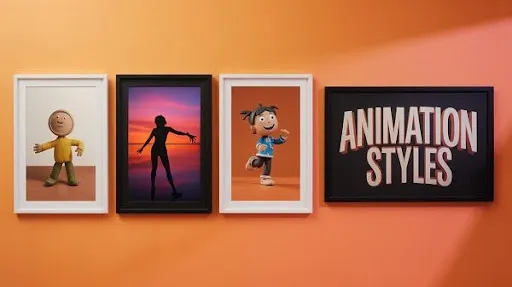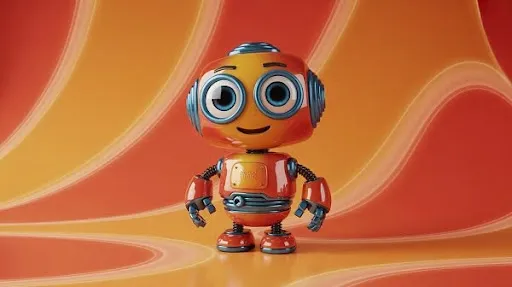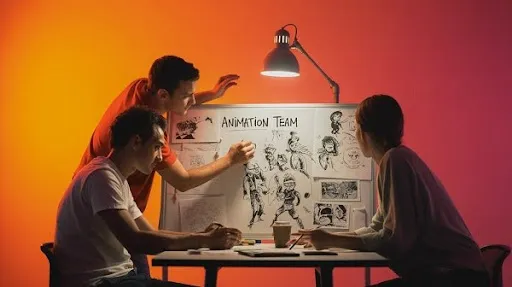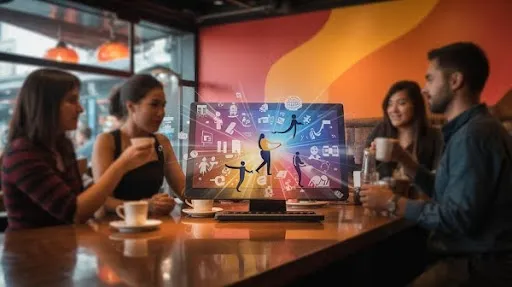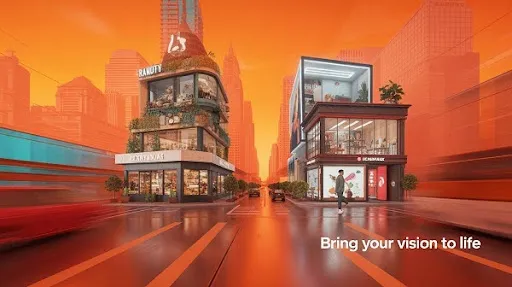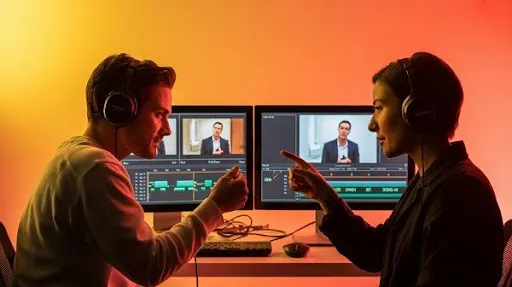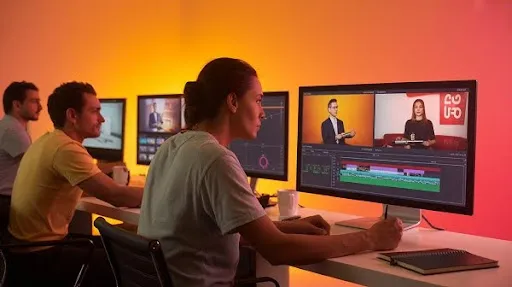Some videos just stick with you. Not because they spent the most money or had the most extravagant effects, but the way they incorporated animation fit the theme seamlessly.
That match is what makes animation one of the most impactful business tools to date. With animation, you can simplify intricately structured ideas, enhance the approachability of your brand, and transform ordinary products into unforgettable phenomena.
At Prolific Studio, we have noticed that the impact of blending various animation styles greatly affects the message. Every animation has its own distinctive style. Be it short commercials that have to pack a punch instantly, or longer brand stories that require drawing an emotional bond, every single style shapes the outcome.
Furthermore, the animation industry is estimated to be at a market value of more than USD 530 billion by 2029.
Each of the styles has defining attributes, practical applications, and examples of how it has been successfully employed in the business world. The guide will walk you through ten of the most distinguished styles and how they were and can be implemented.
1. Stop Motion Animation
What it is:
Stop motion animation makes use of real-world objects, which are systematically altered and photographed. The movement of frames being played in sequence gives the illusion that the objects are in motion.
Why it works for businesses:
There’s something irresistibly tactile about stop motion. Viewers can sense the real-world textures — wood, fabric, clay — even through a screen. That physicality grabs attention fast in an environment full of slick, computer-made visuals.
Stop motion can work effectively for businesses that are looking to differentiate themselves in the industry and stand out from the competition on today’s social media platforms. The movement of objects being served can make ordinary products like coffee mugs, shoes, and even tech gadgets appear to be unique.
It also serves well in short commercials to grab the attention of the viewers, as time is limited.
Example applications:
- Launch videos for a new product line
- Creative social media posts showcasing a physical product
- Quirky explainer clips with a warm, handmade feel
2. Clay Animation (Claymation)
What it is:
The most recent type of animation is still a stop motion branch called clay animation. Characters, figures, and props are made from clay or similar materials, which are then moved shape by shape for every frame to elicit movement.
Why it works for businesses:
The creating of animations and films from clay is called claymation, which uses rigid materials. Characters and objects in a claymation have a relatable and human feel to them, which adds to their warm and playful charm. This makes it ideal for brand storytelling and narratives where human feelings are essential.
It can also humanize technical or dry topics. A software tutorial, for example, could turn into an engaging mini-story starring clay characters.
Example applications:
- Storytelling ads introducing your brand values
- Lighthearted campaigns for family or lifestyle products
- Training videos with a friendly tone
3. Rotoscoping
What it is:
Further to movements made over pictures or videos, drawn or digitally created elements can be added to them. The art of drawing over video frames to create seamless movement is called rotoscoping.
Why it works for businesses:
This approach serves any video or film requiring a unique yet realistic look to be created. It’s suitable for explainers, product showcases, and any live product visuals, which require and keep surreal visuals, capturing the audience’s eyes.
Mixing real-life elements with animation gives a unique approach to any field. This allows them to keep genuine and authentic, adding a touch of fantasy to them.
Example applications:
- Product demonstrations with highlighted features
- Creative ads that combine real actors with stylized visuals
- Music videos and brand campaigns with an artistic mood
4. 2D Animation
What it is:
2D animation is by far the most well-known and popular type among the public. Creating characters, objects, or even a background is drawn or digitally made on a flat surface.
Why it works for businesses:
No other option matches its range of capabilities. Animation can be broken down into 2D forms, such as classic and contemporary cartoons, modern explainer videos, and art from mobile games. To aid businesses, it serves as a cost-effective and flexible means to convey messages.
It’s also ideal for repurposing — assets from a 2D animation can be reused in emails, social media, web banners, and presentations without losing consistency.
Example applications:
- Explainer videos breaking down complex services
- Animated ads for social and display campaigns
- Branded educational content
5. 3D Animation
What it is:
Just like 3D animation creates and sequences animated models within a certain digital environment, models in 3D Animation can be enhanced with lighting, texturing, as well as camera and angle positioning to achieve a photorealistic effect.
Why it works for businesses:
When detail matters, 3D animation services deliver. 3D technology can be used in any area, from marketing and medical technology to real estate. Objects can be rotated and zoomed into as well as simulated in real life.
For businesses within these sectors, 3D technology offers a far more viable and cost-effective solution.
It’s also a strong fit for modern animation techniques in gaming, virtual events, and AR/VR applications.
Example applications:
- Product walk-throughs for B2B sales
- Immersive trade show displays
- Architectural or interior design previews
6. Motion Graphics
What it is:
Elements of motion graphics comprise text, shapes, and icons that are created through animation in addition to graphic design. Unlike character animation, the major aim here is information communication.
Why it works for businesses:
For animation that achieves clarity, motion graphics perform the best. Visual aids, captivating reports, effective presentations, and complex concepts are all made easier using 3D technology, as it is more effective in conveying intricate details.
They are used in many different industries and are one of the most frequently used animations in businesses. 3D animations are popular as they mix the professional business style with animation.
Example applications:
- Product feature breakdowns
- Animated infographics
- SaaS onboarding tutorials
7. Typography Animation
What it is:
Animation of typography differs in that it animates texts to aid in the convey of the message by making them move, stretch, and transform in ways that add emphasis.
Why it works for businesses:
Words carry meaning, but movement gives them impact. Animated taglines, campaign slogans, and key stats can all hit harder with kinetic typography.
It’s also a quick way to make shorter animations like commercials more dynamic without producing full character animation.
Example applications:
- Attention-grabbing headlines for ads
- Animated quotes in social videos
- Highlighting key stats in presentations
8. Animation with Live Action
What it is:
This technique integrates live-action videos with animations, three-dimensional visuals, and other effects. It includes people moving with animated scenes.
Why it works for businesses:
It captures the adorable character of live footage, combined with the adjustable nature of animations. Visual indicators, effects, or product emphasis that are impossible to capture on footage can be added even in complex situations.
Example applications:
- Interactive product demos
- Brand videos with a creative edge
- Campaigns showing customer stories with added animated emphasis
9. Whiteboard Animation
What it is:
Simulating the appearance of drawing on a whiteboard in real time is whiteboard animation. The drawing can be made to look appealing and smooth with digital tools.
Why it works for businesses:
As the visual representation of complicated ideas makes them easier to process, it can be understood as an instructional and friendly technique of storytelling.
Example applications:
- Training materials
- Process explanations
- Fundraising or awareness campaigns
10. Frame-by-Frame Animation
What it is:
Animation frame by frame provides the most control over the details, as it is the most time-consuming method of animation, drawing every frame individually.
Why it works for businesses:
Animation frame by frame provides a distinct, unique, and personalized appearance, unlike videos made with templates. It can animate a character or illustrate a brand narrative with considerable artistic merit.
Example applications:
- Brand mascots
- Artistic advertisements
- High-end creative campaigns
How to Choose the Right Animation Style for Your Business
Purpose, audience, and the available materials are equally important, and therefore, the visual style should complement the objectives. The following tips will help you create the right visual style.
- Budget: Although 3D Animation is more costly than motion graphics or 2D Animation, it is more intricate and includes more details, thus far exceeding its counterparts.
- Brand identity: An animated commercial created for a playful brand would have a more relaxed and fun style, whereas a financial company would be better served with clean and professional motion graphics.
- Content length: Attention-grabbing styles are more suitable for short-length animations such as commercials.
- Reusability: 2D and motion graphic elements are more versatile and can be used across multiple platforms and channels.
Strategic Use of Animation Styles in Business
Knowing animation styles is only half the puzzle. The real benefit is the correct alignment between the animation style and the business goal. The business that views animation as a strategic asset will benefit from higher engagement, better retention, and stronger conversion rates.
Here are some examples of how businesses use different styles of animation in real-life adverts and campaigns.
1. Product Launch Campaigns
Animation can capture attention and is useful for boosting the feel and polish of a reveal or unveiling. For something new, attention is a currency, and animation can help make your reveal feel larger and more polished.
- Stop motion gives a tactile, crafted feel that works for consumer goods.
- 3D animation can highlight design features before the product even exists in physical form.
- Typography animation helps your headline benefits pop instantly.
This works especially well for shorter animations like commercials, where you have only seconds to spark interest.
2. Simplifying Complex Information
Some businesses have offerings that are more complex and nuanced than can be neatly packaged into a single sentence. Here, motion graphics, 2D animation, or whiteboard animation can prove useful.
Such styles can effectively break down complex concepts into distinct, step-by-step visuals while eliminating irrelevant details to keep the viewer actively engaged. That is the reason many B2B and tech companies use these styles for product demos and onboarding.
3. Building Emotional Connection
For a brand as a business, and for campaigns centered around company brand personality, the focus often shifts from cold, analytical data to colorful, emotional storytelling.
Stories told through Claymation or rotoscoping feel more intimate, and frame-by-frame animation provides the same service. These techniques foster a deeper connection between audiences and brands, and that is why they are popular in awareness campaigns, especially for non-profits and lifestyle brands.
Matching Animation Styles to Your Brand Identity
Animation is a visual extension of your brand voice. Choosing the right animation style means thinking about:
- Tone of voice: Is your brand formal, fun, bold, or soft-spoken?
- Target audience: Are they professionals in a niche industry, or everyday consumers?
- Market position: Are you premium, mid-range, or budget-friendly?
A mismatch can create confusion. As an illustration, a playful ad featuring overly corporate motion graphics would hurt a pet food company’s brand equity. Equivalent to premium and luxury brands, businesses that offer a low-cost proposition and wish to cartoon their styling may harm their brand reputation and equity, thus undermining their premium image.
Factors to Consider Before Choosing an Animation Style
- Budget
Novel 3D animation techniques and frame-by-frame animation tend to be more labor-intensive and time-consuming, requiring a larger team, more sophisticated equipment, and software. However, motion graphics and typography animations are quicker to execute and more affordable.
- Project Timeline
If your campaign launch is just weeks away, styles with longer production cycles may not fit. Motion graphics, 2D animation, and typography animation are often faster to produce.
- Asset Reusability
With 2D animation and motion graphics, brands can extract stills, GIFs, and short videos for use on various channels, thereby increasing ROI.
- Platform Requirements
Your targeted platform is important. Think 3D animation is awesome on mobile devices? It’s the other way around. 3D animations might look stunning on large screens, but they lose a lot on mobile devices. Bold motion graphics and typography, however, would work beautifully everywhere.
Business Benefits of Using Key Animation Styles
Animation can be more than “just” a creative choice — it can deliver tangible business results.
- Higher Engagement Rates: Movement captures the attention of the viewer, which increases the likelihood of them staying on the page or advertisement longer.
- Better Message Retention: Visual storytelling aids audiences in remembering your message, as proven by research.
- Increased Conversion Rates: Animations can drive actions from viewers. For example, they can be guided to sign up for an account or make a purchase.
Examples of Animation Styles in Action
Here are a few ways brands have successfully used various animation styles:
- 3D animation for hardware products: Allows detailed virtual demonstrations before manufacturing is complete.
- Whiteboard animation for training: Keeps audiences engaged during onboarding and increases information recall.
- Stop motion for social ads: Creates scroll-stopping visuals that stand out among static posts.
- Motion graphics for SaaS marketing: Clearly displays how the platform’s benefits can be visualized as charts, icons, and animated flows.
Pro Tips for Making Animation Work for Your Business
- Focus on the story first: Even the best animation type will fall flat without a clear narrative.
- Adapt length to the goal: These can be longer than short commercials, while the longer brand stories can be explored in greater detail, but shorter advertisements should be precise and directly to the point.
- Work with experienced animators: A professional touch can elevate the quality and make your content feel premium.
- Test different formats: What works on LinkedIn might not be as effective on Instagram or YouTube.
- Use captions and text overlays: Many viewers watch with sound off, especially on mobile.
FAQs on Animation Styles for Business
What is the best animation type for marketing?
There’s no single best animation type — it depends on your goals. For product showcases, 3D animation often works best. For quick social ads, motion graphics or stop motion can deliver faster engagement.
Which type of animation is 2D animation most suitable for?
2D animation is perfect for explainer videos and educational content, and for campaigns where versatility and budget control are priorities.
Which type of animation is 3D animation most suitable for?
3D animation is ideal for industries needing detailed visualization — architecture, manufacturing, medical, and premium consumer products.
What’s the most cost-effective animation style?
Typography, animation, and basic motion graphics offer a highly effective form of communication for constricted budgets.
How do I pick the right animation style for my business?
Consider your message, intended audience, available funds, and your deadline. The animation style that best conveys your message is the one that matches your brand persona and intended output.
Can animation help with brand recognition?
Yes. Lifelong brand loyalty can be built through consistent animation, style, colors, and tone, granting instant recognition to your brand.
Final Word
Animation is not mere decoration; it accentuates a brand’s message and helps it stick to the intended audience regardless of the platform. The appropriate animation helps brand messages stick by transforming a simple announcement into unforgettable moments, explaining complex processes in seconds, and invoking a multi-faceted audience.
At Prolific Studio, one of the best animation companies in Chicago, we specialize in helping businesses choose and execute animation styles that work. From 3D product demos to colorful and lighthearted animation styles for social media, our team knows how to blend creativity with strategy.
If you’re ready to create animations that not only look good but deliver measurable results, get in touch with Prolific Studio today. Your next project deserves the best style — and the right hands to bring it to life.
Related articles:

